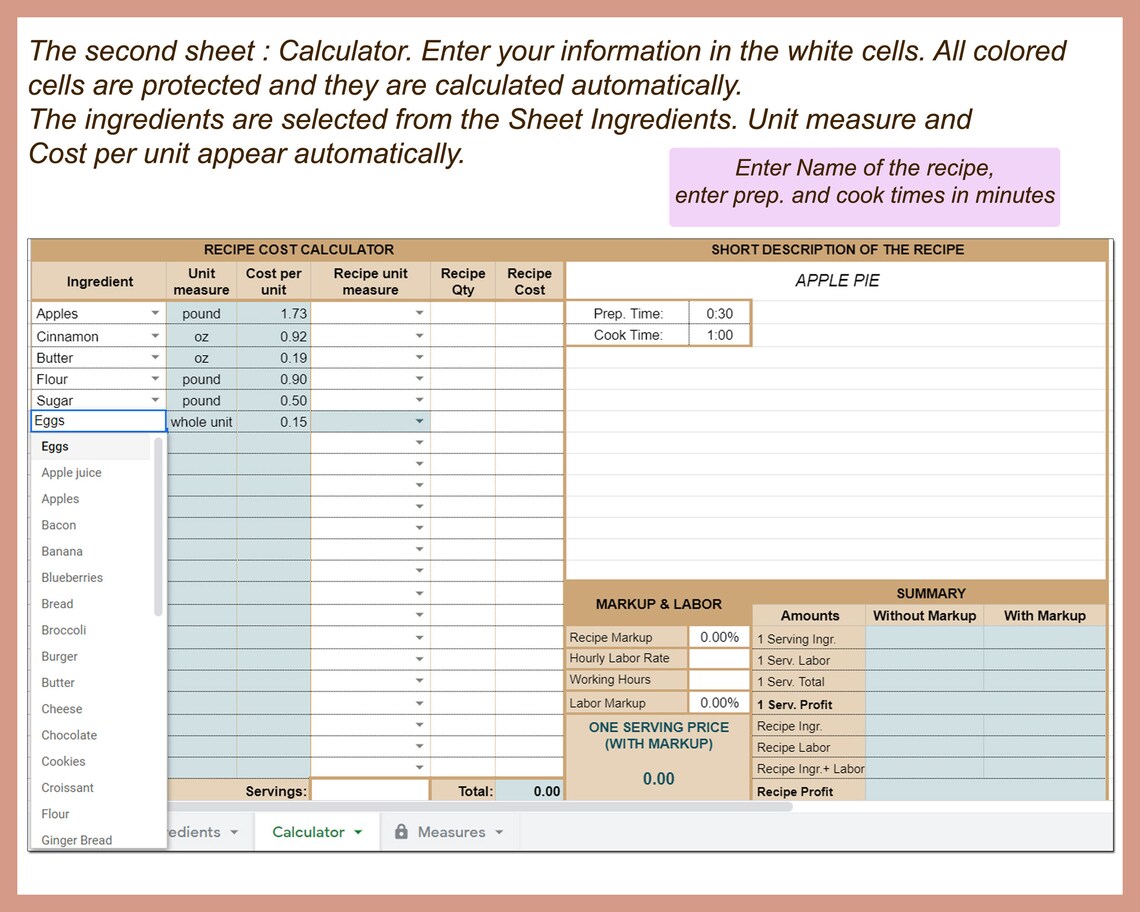

You need to be able to look at the total cost per dish, then multiply it by however many times the menu item is made. Total food cost is different than COGS because it only takes into account the materials used to make each menu item–not the total inventory. Total Food Cost ÷ Total Food Sales = Ideal Food Cost Percentage To find your ideal food cost percentage, you need to calculate your restaurant’s total food cost (the raw ingredients you use to make each dish) divided by your total food sales: Think of your ideal food cost as what your restaurant’s food cost percentage would be in a utopia–an alternate universe where food doesn’t spoil, orders are never rung up incorrectly, inventory is never subjected to theft, etc. Now, the way you really make an impact with food cost percentage is by comparing it with an ideal food cost percentage. So taking the COGS from the example above, if your cost of goods sold is $6,000, and let’s say your total food sales is $20,000, then the food cost percentage comes out to. So now that you’ve got your COGS, you’ll want to get your total food sales for that week, and then use the following formula to get your food cost percentage:ĬOGS ÷ Total Food Sales = Food Cost Percentage So for example, say your beginning inventory is $4,000, your purchased inventory is $10,000 and your ending inventory is $8,000, your COGS will end up being $6,000: The same thinking can be applied if you are trying to calculate month to month COGS and so on. Inventory in both of these cases should account for seasonings, spices, oils, toothpicks–anything that contributes to the way the menu item meets the plate.
Menu pricing calculator full#
Ending inventory is the inventory you have left after a full week of service. Purchased inventory is whatever additional raw goods you have coming in that week. If you are trying to calculate COGS from week to week, then your beginning inventory would be whatever leftover inventory you have from the week before. To get this number, you follow the following formula:īeginning Inventory + Purchased Inventory – Ending Inventory = COGS The first being, Cost of Goods Sold (COGS), aka, the money you spent on ingredients.

In order to calculate food cost percentage for your restaurant, you’ll need to gather a couple of different metrics.

If food costs are off, even by a few cents, it could end up costing your restaurant thousands of dollars in revenue. Food cost calculations are important because they inform your menu pricing, not to mention if your restaurant is turning a profit.

Food cost (cost/sales) is usually expressed as a percentage, called a food cost percentage. In simple terms, food cost refers to the ratio between money spent on raw ingredients for menu items and the revenue generated from the sale of those dishes. First, let’s dive into why calculating food costs is so important for restaurants in the first place. But that’s why we’re going to walk you through the formulas that will put you in control of your food costs. One of the most important costs your restaurant should be calculating, tracking, and recalculating, is food costs.Īs with anything math-related and unfamiliar, inventory or budget-related can feel a bit overwhelming. You can have the best dinner menu in the world, all the awards and customers you can ask for, but if your restaurant loses track of its budget, you risk losing profits.


 0 kommentar(er)
0 kommentar(er)
